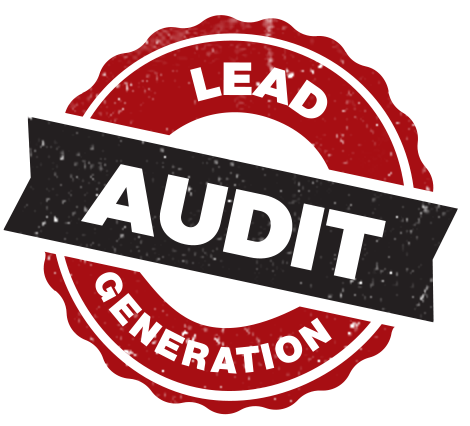The Not-So-Obvious Connection Between Website Conversion & SEO
Get Good At One… You’ll Automatically Improve The Other.
By Rich Harshaw
Want to juice your SEO rankings? Simple! Just create and post a ton of great content on your website.
Want your website to do a better job of converting lookers into buyers? Simple! Just create on post a ton of great content on your website.
Is it really THAT simple?
Well… yes and no.
No, because both disciplines—SEO and website conversion—are fairly complex and multi-faceted.
To maximize conversion on your website, you’ve got to have an attractive & aesthetically pleasing site, a rock-solid identity, plenty of evidence & social proof, and a few strategically engagement tools (forms, pop-ups, calls to action, etc.).
And to maximize SEO effectiveness, you’ve got to master on-page coding (or what I call nerd-coding), back linking, social media posting, keyword selection, and more.
But the bedrock foundation of both is great content.
Lots and lots of relevant, interesting, recent, case-building CONTENT.
Here are a few kinds of content you can produce that will push you speedily toward your destination in both categories:
1. Core Content: Your core content is the information on the main pages of your website that’s dedicated to selling your company and your products/services. In other words, it’s your home page, your services pages, your reputation pages, your about us page, and so forth. Essentially, it’s whatever you would want to be live on your website the day it launches. I’m not going to cover this stuff in this post except to briefly mention what it is here. Obviously, it’s imperative that your core content needs to be powerful, precise, and passionate. It should be dripping with Identity, and build a case for you and your products.
2. Blog Postings & Articles: Most site owners know that blog postings are important for SEO… but these articles/posts will only do their job if they’re relevant and interesting. And if those articles are relevant & interesting, guess what! People will actually want to read them, which will lead to better conversion. Crazy concept, huh!? Don’t focus on low-quality articles & blogs just for the sake of having them. In real life, this is a challenge, and there is a bit of a trade-off—it’s difficult to write massively engrossing content 2 or 3 times a week. At a bare minimum, you should post 10 articles a month to your website; aim for a ratio of at least 3 great articles and 7 good articles. Some mediocre articles may slip in there, but hold them to a minimum. Poor articles should be avoided.
3. Online Reviews: Online reviews are perhaps one of the most important conversion tools you can provide your website prospects and get those home improvement leads pouring in. People LOVE to read what others think about you—it allows them to shortcut their due diligence and still get a pretty good idea of what to expect if they hire you. For conversion, online reviews are not optional. They’re mandatory.
But online reviews are also an excellent source of content for a contractor’s SEO purposes. Most home improvement website owners don’t think of reviews as “content,” but you better believe that’s exactly what it is. I suggest you hire a company that specializes in online reviews that will automate the process so you basically never have to think about it… then let those online reviews pile up high and deep on your website. Google will love the regency and frequency of the new reviews—as well as their keyword-rich granularity. Over time your rankings will rise steadily and you’ll get more traffic.
4. Case Studies: Case studies are essentially online reviews on steroids. A good case study involves an interview with a happy client that digs into the “before, during, and after” of their experience with you. Things like:
- Why they wanted to do this kind of project in the first place.
- How long they were thinking about and researching it.
- How they chose you over your competitors.
- Their experience during the sales process.
- Challenges that came up during the project, and how they were resolved.
- Things or people on your staff that impressed them during the project.
- Their satisfaction with the price you charged them.
- Overall impressions and recommendations after the project.
Once the data is gathered, get as many pictures from the project as possible (before, during, after, if possible) and hand it all over to a skillful copywriter to make it into something readable and interesting.
Your prospects will love it because it shows a detailed snapshot of what it’s like to work with you.
Google will love it because case studies are naturally keyword dense and people tend to stay on these pages for a long time.
I recommend adding one case study per month to your website. It’s not easy to do… but very worth it.
Here are some examples to give you an idea.
5. Videos: Everyone knows that Google loves videos, and that Google owns YouTube (you knew that, right?). So it stands to reason that videos are good for a remodeler’s SEO. And they’re also good for conversion… provided they are helpful, relevant, and interesting. Here’s the good news: Videos don’t HAVE to be expensive, professional, and fancy to do the trick (not that it hurts, either!).
Focus on creating video content that is short—like 30 to 60 seconds—and posting them to your YouTube account, then embedding them on your website (and/or social media accounts). I’ll be writing a post on quick and easy and inexpensive videos shortly… stay tuned.
6. Photos: Make a habit of taking before, during, and after photos of every job you do—or at least 4 or 5 jobs a month. Yes, it’s a pain in the butt, but… photos make great content for both SEO and conversion. Hand your photos to your nerd to make sure they’re tagged properly for SEO purposes, and if possible, put a caption below each photo describing what a person should be looking at (for conversion purposes). It is literally impossible to have too many photos. Just make sure they’re organized in a way that makes them easy to find/see/deal with. Here’s an example.
7. Expert Advice: This is actually a sub-category of blog postings, but at least it gives you a bit of a framework for blogging. Sit down and think of the 20 most common questions you get during a SALES PRESENTATION. Really think through it. For example: A metal roofing company told me that almost every single prospect asks “Will it be loud when it rains on my metal roof?” Now write a short answer and put it under the header of “Ask The Expert” and voilà! You are expert, people get their questions answered and you increase the chance to improve your roofing SEO. You could also answer the question on video for an added punch to both SEO and conversion.
8. Local Pages: Local pages are landing pages within your home improvement website that are dedicated to a specific product and a specific geographic location—like “Windows in Orlando” or “Siding in Kissimmee”. Google loves these kinds of pages because they utilize hyper-specific keywords… which is also the exact same reason that actual prospects like them! It lets them know that you sell what they are looking for in the exact area they are looking for it. Caution: Don’t use the same text over and over on every page and simply swap out city names only. This can make Google mad because Google hates “duplicate content.” Stay safe!
So there you have it… conversion and SEO all in one big ball of wax, whatever that means.
Now pick up your rock and throw it at a couple of birds.
Click Here For Free Lead Generation Audit:
We’ll perform an in-depth audit of your company’s website (HVAC professionals, home improvement contractors, and everyone else is welcome) and lead generation activities. Then spend 90 minutes on the phone with you discussing our findings… and conducting an Identity discovery session. This valuable marketing insight is worth $4,500, and is yours for FREE—if you meet the conditions.
© 2015 – 2016, Rich Harshaw. All rights reserved.








